Creating Visual AI Ethics Frameworks: A Leadership Guide for Modern Business
Navigate the complex intersection of AI innovation and ethical responsibility with clear visual frameworks
In today's rapidly evolving business landscape, leaders face unprecedented challenges and opportunities as artificial intelligence transforms their operations. Creating clear, actionable visual frameworks for AI ethics is no longer optional—it's essential for responsible innovation, regulatory compliance, and stakeholder trust.
This comprehensive guide will help you develop and implement visual AI ethics frameworks that translate complex principles into clear guidelines that can be understood and applied across your entire organization.
The Evolving Landscape of AI Ethics in Business
As AI systems become increasingly integrated into core business operations, the ethical dimensions of these implementations have taken center stage. In today's business environment, leaders are navigating a complex terrain where innovation must be balanced with responsibility.

Corporate environments are rapidly adopting AI technologies across multiple domains: customer service, decision-making, product development, and internal operations. According to industry research, this implementation often outpaces the development of corresponding ethical frameworks that should guide these deployments.
Key Ethical Challenges for Business Leaders
Business leaders in 2023-2024 face several critical ethical challenges that require thoughtful visual frameworks:
The following chart represents the relative significance of key AI ethics challenges facing business leaders today:
The regulatory landscape is also evolving rapidly. In the EU, the AI Act establishes tiered regulatory requirements, while in the US, various state and federal initiatives are emerging. Business leaders must stay ahead of these developments by implementing robust ethical frameworks that anticipate regulatory changes.
Stakeholders—including customers, employees, investors, and the broader public—increasingly expect businesses to use AI responsibly. Research from Harvard's Edmond & Lily Safra Center for Ethics indicates that business leaders are "uniquely positioned to shape the ethical framework and company culture within which AI operates," influencing the responsible design and deployment of these systems.
Stakeholder Expectations for Ethical AI
Different stakeholders have varying expectations for how businesses should approach AI ethics:
mindmap
root((Business AI Ethics))
Customers
Data privacy protection
Transparent AI use
Opt-out options
Employees
Fair AI-based decisions
Skills development
Human oversight
Investors
Risk mitigation
Regulatory compliance
Reputational protection
Regulators
Consumer protection
Market fairness
Accountability mechanisms
Society
Inclusive design
Ethical outcomes
Environmental impact
By creating visual frameworks for AI ethics, business leaders can effectively communicate expectations, establish clear governance, and embed ethical considerations into their organization's AI strategy. This approach helps bridge the gap between technical implementations and ethical governance.
Business leaders who understand and implement effective AI prompts as part of their ethics framework can better guide their teams toward responsible AI usage, particularly in generative AI applications where prompt engineering significantly influences outputs.
Core Components of an AI Ethics Visual Framework
An effective visual AI ethics framework translates abstract ethical concepts into clear, actionable guidelines that can be understood and implemented across your organization. The core components of such a framework must be carefully designed to communicate complex principles in accessible ways.
Key Ethical Principles for Visualization

When developing your visual ethics framework, consider including these fundamental principles:
- Fairness & Non-discrimination: Visual representations of how AI systems can be tested for bias across different demographic groups
- Transparency & Explainability: Visual workflows showing how AI decisions can be explained to affected parties
- Privacy & Data Governance: Visual maps of data flows, storage limitations, and consent requirements
- Safety & Security: Visual risk assessment matrices specific to AI deployment
- Accountability: Visual organizational charts showing oversight and responsibility for AI systems
- Human-Centered Values: Visual frameworks showing how human oversight is maintained in AI-assisted processes
Balancing Innovation and Responsibility
A successful AI ethics governance model balances innovation with ethical responsibility:
graph TD
A[Business Need] -->|Initiates| B[Innovation Process]
B --> C{Ethics Assessment}
C -->|Passes| D[Implementation with Monitoring]
C -->|Issues Found| E[Ethical Refinement]
E --> C
D --> F[Continuous Evaluation]
F -->|Issues Emerge| E
F -->|Continues to Meet Standards| G[Scaled Deployment]
classDef orange fill:#FF8000,stroke:#333,stroke-width:1px,color:white;
classDef process fill:#f9f9f9,stroke:#333,stroke-width:1px;
classDef decision fill:#FFAD5C,stroke:#333,stroke-width:1px;
classDef output fill:#E67300,stroke:#333,stroke-width:1px,color:white;
class A,G output;
class B,D,E,F process;
class C decision;
Cross-departmental considerations are essential when designing ethics visualizations. Different departments have varied perspectives and needs:
| Department | Key Ethical Concerns | Visualization Focus |
|---|---|---|
| Legal & Compliance | Regulatory adherence, liability exposure | Compliance mapping, risk assessment matrices |
| HR & People Ops | Fair employment practices, skills development | Impact assessments, training roadmaps |
| Product Development | User safety, algorithm fairness | Design review workflows, testing frameworks |
| Customer Service | Transparency, support for AI decisions | Explanation templates, escalation pathways |
| Data Science | Model integrity, bias mitigation | Testing dashboards, fairness metrics |
PageOn.ai's AI Blocks feature can be particularly valuable when structuring complex ethical principles. This tool allows you to create modular visual components representing different ethical considerations. These blocks can then be arranged and connected to show relationships between principles, creating a comprehensive yet understandable framework.
For a complete organizational approach, consider integrating ethical principles into your AI-powered organizational chart, making responsibility for different aspects of ethical AI explicitly visible across your company structure.
Designing Effective Visual Ethics Guidelines
Effectively designed visual ethics guidelines can transform abstract principles into actionable frameworks. By structuring them thoughtfully, you can ensure they reach and resonate with stakeholders across different organizational levels.
Tiered Visual Communication
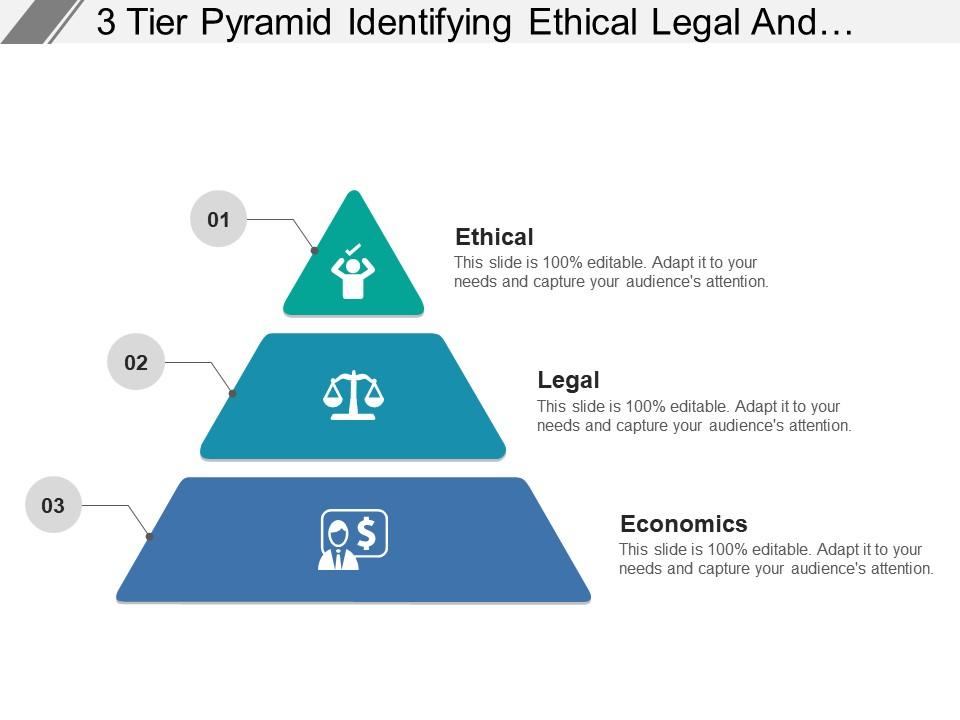
A well-designed tiered approach ensures that visual ethics guidelines are tailored to the specific needs and responsibilities of different organizational levels:
Comparative Focus Areas by Organizational Level
Decision trees are particularly valuable in ethical AI implementation, as they can guide users through complex ethical considerations in a structured way.
Sample Decision Tree for AI Implementation Ethics
flowchart TD
A[New AI Initiative] --> B{Does it process personal data?}
B -->|Yes| C[Complete Privacy Impact Assessment]
B -->|No| D{Does it make decisions affecting individuals?}
C --> E{High Privacy Risk?}
E -->|Yes| F[Implement enhanced data safeguards]
E -->|No| G[Standard data protocols apply]
D -->|Yes| H{How significant is the impact?}
D -->|No| I[Low risk - proceed with standard review]
H -->|High| J[Full ethics board review required]
H -->|Medium| K[Departmental ethics review]
H -->|Low| L[Self-assessment with documentation]
classDef question fill:#FFAD5C,stroke:#333,stroke-width:1px;
classDef action fill:#f9f9f9,stroke:#333,stroke-width:1px;
classDef highRisk fill:#FF8000,stroke:#333,stroke-width:1px,color:white;
class A,C,F,G,I,J,K,L action;
class B,D,E,H question;
class F,J highRisk;
Dashboard Templates for Ethics Compliance
Effective dashboard templates can help organizations monitor their adherence to ethical AI principles. These dashboards should include key metrics that track implementation, compliance, and impact.

Risk assessment matrices help visualize potential ethical issues associated with AI deployment. By mapping likelihood against impact, these matrices help prioritize mitigation efforts.
AI Ethics Risk Assessment Matrix
PageOn.ai's Deep Search feature can significantly enhance your visual ethics framework by integrating relevant case examples, compliance requirements, and best practices. This ensures that your guidelines are both comprehensive and up-to-date with the latest developments in AI ethics.
For organizations implementing AI work assistants, visual guidelines are particularly important to establish clear boundaries and ensure these tools are used ethically within the workplace.
Implementing Ethics Review Protocols Through Visual Tools
Establishing effective ethics review protocols is essential for ensuring that AI implementations align with your organization's ethical principles. Visual tools can significantly enhance these processes by making them more accessible and easier to navigate.
Cross-Functional Ethics Review Board Workflows
An effective ethics review board should include representatives from various departments to ensure diverse perspectives. According to the BairesDev ethical AI implementation guide, "AI decisions impact finance, HR, legal, and customer experience, so oversight can't be left to engineers alone."
Ethics Review Board Workflow
graph TB
A[Project Submission] --> B[Initial Screening]
B -->|Minimal Risk| C[Expedited Review]
B -->|Standard Risk| D[Full Board Review]
B -->|High Risk| E[Enhanced Review with External Expert]
C --> F{Approved?}
D --> F
E --> F
F -->|Yes| G[Implementation with Monitoring]
F -->|Conditional| H[Revisions Required]
F -->|No| I[Project Redesign]
H --> J[Resubmission]
I --> J
J --> B
classDef process fill:#f9f9f9,stroke:#333,stroke-width:1px;
classDef decision fill:#FFAD5C,stroke:#333,stroke-width:1px;
classDef approval fill:#66BB6A,stroke:#333,stroke-width:1px;
classDef rejection fill:#FF8000,stroke:#333,stroke-width:1px;
class A,B,C,D,E,H,I,J process;
class F decision;
class G approval;

Visual Checklists for Ethics Assessment
Visual checklists can guide team members through the ethics assessment process, ensuring that all important considerations are addressed. These checklists should be tailored to specific AI applications and use cases.
| Assessment Category | Key Questions | Visual Aid Type |
|---|---|---|
| Data Ethics |
|
Data flow diagram, consent visualization |
| Model Fairness |
|
Demographic comparison charts, fairness metrics dashboard |
| Transparency |
|
Explanation templates, review process flowchart |
| Human Impact |
|
Stakeholder impact matrices, scenario visualizations |
| Accountability |
|
Responsibility matrix, escalation pathways |
Escalation Pathways for Ethical Concerns
Clear escalation pathways ensure that ethical concerns can be efficiently addressed. Visualizing these pathways helps employees understand how to report issues and what to expect in response.
Ethics Concern Escalation Pathway
flowchart TD
A[Team Member Identifies Concern] --> B{Immediate Risk?}
B -->|Yes| C[Rapid Response Protocol]
B -->|No| D[Document in Ethics Issue Tracker]
C --> E[Ethics Officer Notified]
D --> F[Line Manager Review]
F --> G{Resolved at Team Level?}
G -->|Yes| H[Document Resolution & Learnings]
G -->|No| E
E --> I[Ethics Committee Assessment]
I --> J{Severity Level}
J -->|Low| K[Implement Standard Response]
J -->|Medium| L[Department Head & Ethics Officer Review]
J -->|High| M[Executive Review & External Consultation]
K --> N[Monitor & Document]
L --> N
M --> O[Board Level Reporting & Response]
O --> N
classDef orange fill:#FF8000,stroke:#333,stroke-width:1px,color:white;
classDef process fill:#f9f9f9,stroke:#333,stroke-width:1px;
classDef decision fill:#FFAD5C,stroke:#333,stroke-width:1px;
class A,C,D,E,F,H,K,L,M,N,O process;
class B,G,J decision;
class C,E,M orange;
Frameworks for Bias Detection and Mitigation
Visual frameworks that help teams identify and address bias in AI systems are crucial components of an ethical implementation process.
AI Fairness Metrics Across Demographics
PageOn.ai's visual conversation tools can facilitate ethics discussions among diverse stakeholders. These tools allow for collaborative mapping of ethical considerations, making it easier to identify potential issues and develop mitigation strategies.
When creating AI business presentations about ethics implementation, these visual frameworks can be incorporated to enhance understanding and demonstrate your organization's commitment to responsible AI use.
Data Governance Visualization Strategies
Data governance is a fundamental component of ethical AI implementation. Visual representations of data governance policies can help stakeholders understand how data is collected, stored, used, and protected throughout its lifecycle.
Mapping Data Flows with Visual Clarity
Data flow diagrams help visualize how information moves through AI systems, making it easier to identify potential privacy issues or governance gaps.
AI System Data Flow Visualization
flowchart LR
A[Data Collection] --> B[Data Storage]
B --> C[Data Preprocessing]
C --> D[AI Model Training]
D --> E[Model Evaluation]
E --> F[Deployment]
F --> G[User Interaction]
G --> H[Feedback Collection]
H --> I{Improvement Needed?}
I -->|Yes| C
I -->|No| J[Continued Monitoring]
subgraph "Data Protection Zone"
A
B
end
subgraph "AI Development Zone"
C
D
E
end
subgraph "Production Zone"
F
G
H
I
J
end
classDef protection fill:#f9f9f9,stroke:#FF8000,stroke-width:2px;
classDef development fill:#f9f9f9,stroke:#42A5F5,stroke-width:2px;
classDef production fill:#f9f9f9,stroke:#66BB6A,stroke-width:2px;
classDef decision fill:#FFAD5C,stroke:#333,stroke-width:1px;
class A,B protection;
class C,D,E development;
class F,G,H,J production;
class I decision;

Visual Representations of Data Storage and Consent
Clear visual representations of data storage limitations and consent models help ensure compliance with regulations and build trust with stakeholders.
Data Retention Policies by Data Category
Privacy Impact Assessment Visualizations
Privacy impact assessments help organizations identify and mitigate privacy risks. Visual representations of these assessments make them more accessible and actionable.
Privacy Impact Assessment Process
graph TD
A[Project Initiation] --> B[Data Mapping]
B --> C[Privacy Risk Identification]
C --> D[Risk Analysis & Scoring]
D --> E{Acceptable Risk Level?}
E -->|Yes| F[Document Assessment]
E -->|No| G[Implement Controls]
G --> H[Reassess Risks]
H --> E
F --> I[Regular Review Schedule]
subgraph "Assessment Phase"
B
C
D
E
end
subgraph "Response Phase"
F
G
H
I
end
classDef assessment fill:#f9f9f9,stroke:#FF8000,stroke-width:2px;
classDef response fill:#f9f9f9,stroke:#42A5F5,stroke-width:2px;
classDef start fill:#f9f9f9,stroke:#333,stroke-width:1px;
classDef decision fill:#FFAD5C,stroke:#333,stroke-width:1px;
class A start;
class B,C,D assessment;
class F,G,H,I response;
class E decision;
Visual Breach Protocol Documentation
Clear visual documentation of data breach protocols ensures that teams understand their responsibilities in the event of a breach. According to experts in ethical AI implementation, organizations should "establish breach protocols that clearly define procedures and responsibilities if a data breach occurs."
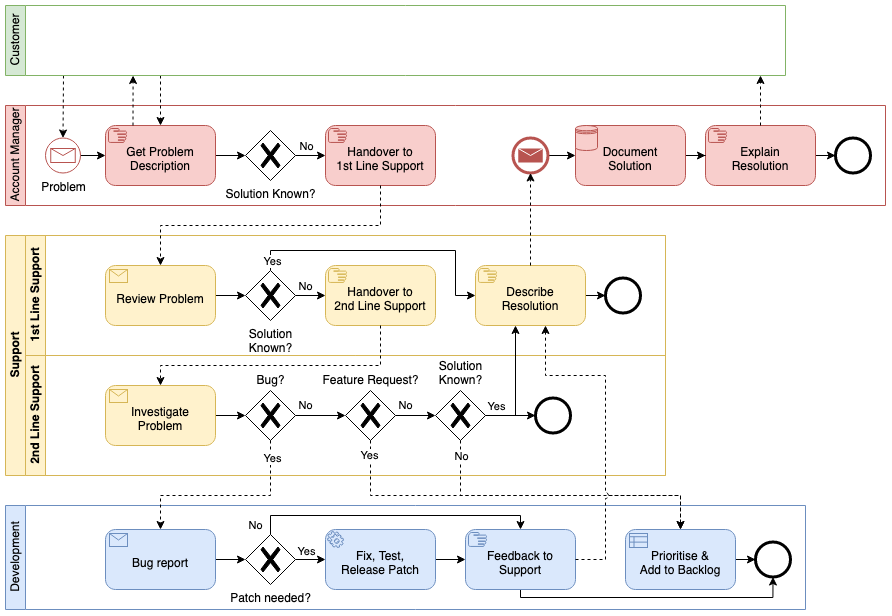
PageOn.ai excels at transforming complex data governance concepts into accessible visuals. By leveraging its visualization capabilities, organizations can create data governance frameworks that are both comprehensive and easy to understand.
As organizations define AI job duties for roles with data governance responsibilities, visual frameworks can clarify expectations and accountability for ethical AI implementation.
Training and Communication Approaches
Effective training and communication are essential for ensuring that AI ethics principles are understood and applied consistently throughout your organization. Visual approaches can significantly enhance these efforts.
Visual Training Modules for Different Roles
Different organizational roles interact with AI systems in different ways, and their training should reflect these differences. Visual training modules tailored to specific roles can ensure that everyone understands their ethical responsibilities.
Role-Specific Training Focus Areas
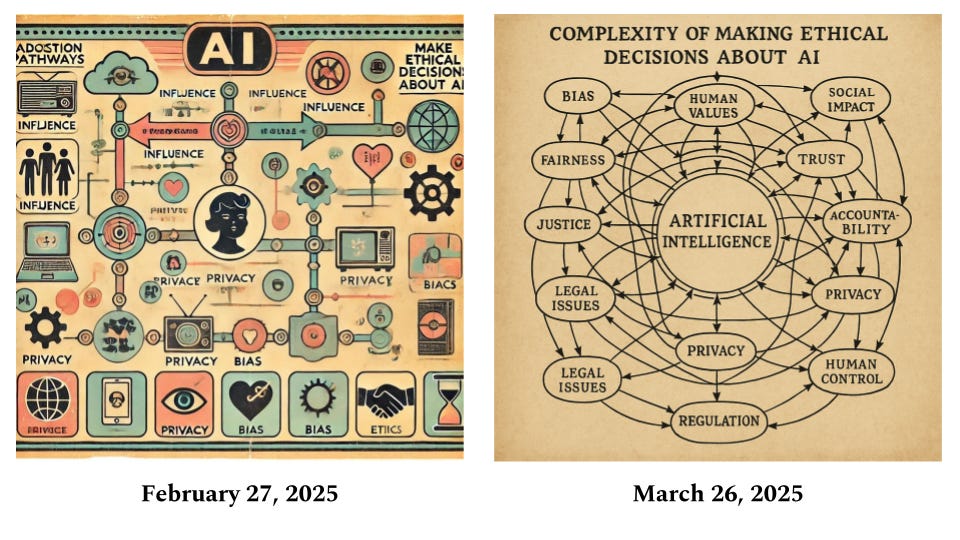
Scenario-Based Visual Learning
Scenario-based learning helps employees understand how to apply ethical principles in real-world situations. Visual representations of these scenarios can make the learning experience more engaging and effective.
Ethical Decision-Making Scenario Example
graph TD
A[AI Recruiting Tool Shows Gender Bias] --> B{Immediate Action?}
B -->|Continue Use| C[Risk: Legal Liability & Reputation Damage]
B -->|Pause Use| D[Safety: Prevent Further Bias]
D --> E{Root Cause Analysis}
E -->|Training Data Bias| F[Rebalance Training Data]
E -->|Algorithm Design| G[Modify Algorithm]
E -->|Feature Selection| H[Revise Feature Weights]
F --> I[Test for Fairness]
G --> I
H --> I
I --> J{Bias Eliminated?}
J -->|Yes| K[Resume Use with Monitoring]
J -->|No| E
K --> L[Document & Share Learnings]
classDef bad fill:#FFAD5C,stroke:#E67300,stroke-width:1px;
classDef good fill:#66BB6A,stroke:#43A047,stroke-width:1px;
classDef process fill:#f9f9f9,stroke:#333,stroke-width:1px;
classDef decision fill:#FFAD5C,stroke:#333,stroke-width:1px;
class A,E,F,G,H,I,L process;
class B,J decision;
class C bad;
class D,K good;
Executive Dashboards for Ethics Oversight
Executive dashboards provide high-level visibility into an organization's AI ethics implementation. These dashboards should visualize key metrics and highlight areas that require attention.
AI Ethics Implementation Dashboard
PageOn.ai's Vibe Creation feature is particularly valuable for transforming technical ethical concepts into engaging visual narratives. This capability helps make complex principles more accessible to a wider audience, increasing understanding and adoption throughout your organization.
Measuring and Improving Your Ethics Framework
An effective AI ethics framework is not static—it should evolve and improve over time. Measuring the performance of your framework and making data-driven improvements is essential for long-term success.
Visual Metrics for Tracking Ethics Implementation
Visual metrics provide at-a-glance insights into the effectiveness of your ethics implementation. These metrics should track both process adherence and outcomes.
Ethics Implementation Metrics Over Time
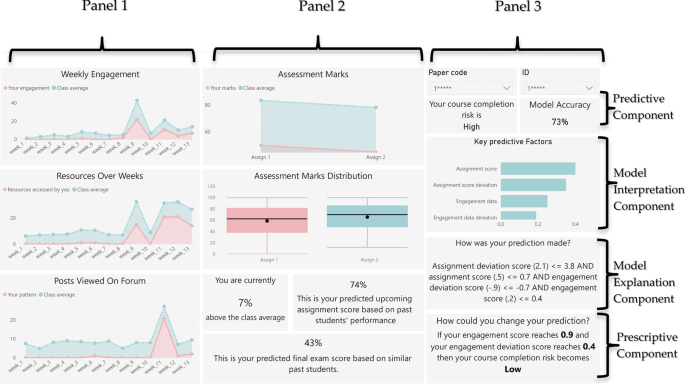
Comparative Benchmarks Against Industry Standards
Benchmarking your ethics framework against industry standards helps identify areas for improvement and demonstrate your organization's commitment to ethical AI.
Industry Benchmark Comparison
Iterative Improvement Visual Roadmaps
Visual roadmaps help organizations plan and track their ethics framework improvements over time. These roadmaps should highlight key milestones and dependencies.
Ethics Framework Improvement Roadmap
gantt
title AI Ethics Framework Improvement Roadmap
dateFormat YYYY-MM-DD
section Foundation
Initial Assessment :done, a1, 2023-01-01, 45d
Ethics Committee Formation :done, a2, after a1, 30d
Basic Guidelines Development :done, a3, after a2, 60d
section Enhancement
Comprehensive Training :active, b1, 2023-05-15, 90d
Review Process Refinement :active, b2, 2023-06-01, 75d
Metrics Development :b3, after b1, 60d
section Advanced
Automated Monitoring Tools :c1, 2023-11-01, 90d
Cross-Organization Standards :c2, 2023-12-15, 120d
Continuous Improvement System:c3, after c2, 90d
PageOn.ai's visualization capabilities can transform complex implementation data into clear progress visualizations. This makes it easier to communicate progress to stakeholders and identify areas that require additional attention.
Case Studies: Visual Ethics Frameworks in Action
Examining successful implementations of visual ethics frameworks provides valuable insights and inspiration. These case studies highlight best practices and lessons learned from organizations that have effectively integrated ethics into their AI strategies.

Successful Approaches Across Industries
Different industries have developed unique approaches to AI ethics visualization that address their specific challenges and requirements.
| Industry | Key Visualization Approach | Notable Outcome |
|---|---|---|
| Healthcare | Patient-centric decision trees with clear explainability visualizations | 48% increase in clinician trust of AI diagnostic recommendations |
| Financial Services | Risk-weighted ethics matrices with regulatory compliance mapping | Reduction in bias-related complaints and 35% faster regulatory reviews |
| Retail | Customer journey ethics overlays showing AI touchpoints and opt-out options | 27% increase in customer satisfaction with personalization features |
| Manufacturing | Worker-AI collaboration diagrams with safety and oversight protocols | 40% reduction in AI-related safety incidents and improved worker adoption |
| Government | Transparency-focused public dashboards with accountability tracking | Increased public trust and 52% reduction in freedom of information requests |
Lessons from Early Adopters
Early adopters of visual ethics frameworks have identified several key lessons that can help other organizations develop more effective approaches:
- Start with clear principles: Successful organizations begin with well-defined ethical principles that serve as the foundation for their visual frameworks.
- Engage diverse stakeholders: Including perspectives from different departments, backgrounds, and expertise levels results in more comprehensive and effective ethics visualizations.
- Iterate based on feedback: The most successful frameworks evolve over time based on user feedback and changing requirements.
- Balance detail with accessibility: Effective visualizations provide sufficient detail while remaining accessible to users with varying levels of technical expertise.
- Integrate into existing workflows: Ethics visualizations that integrate smoothly into existing workflows see higher adoption rates and better outcomes.
Ethics Visualization Impact on Issue Prevention
PageOn.ai has been successfully applied in real-world ethics framework creation across various organizations. Its visual communication tools help translate complex ethical concepts into clear, actionable guidelines that can be understood and applied by stakeholders at all levels.
Ethics Framework Evolution Over Time
flowchart TD
A[Initial Framework: Basic Principles] --> B[Version 2: Expanded Guidelines]
B --> C[Version 3: Interactive Decision Trees]
C --> D[Version 4: Integrated Monitoring]
D --> E[Current: Adaptive Learning System]
A1[Limited Visualization] --> A
A2[Text-Heavy Documentation] --> A
A3[Top-Down Implementation] --> A
B1[Role-Based Visual Guides] --> B
B2[Process Flowcharts] --> B
B3[Training Modules] --> B
C1[Interactive Scenarios] --> C
C2[Department-Specific Trees] --> C
C3[Ethics Chatbot Support] --> C
D1[Real-Time Dashboards] --> D
D2[Automated Compliance Alerts] --> D
D3[Risk Visualization Tools] --> D
E1[Personalized Ethics Interfaces] --> E
E2[AI-Suggested Improvements] --> E
E3[Cross-Team Collaboration Tools] --> E
classDef v1 fill:#f9f9f9,stroke:#FFA726,stroke-width:2px;
classDef v2 fill:#f9f9f9,stroke:#42A5F5,stroke-width:2px;
classDef v3 fill:#f9f9f9,stroke:#66BB6A,stroke-width:2px;
classDef v4 fill:#f9f9f9,stroke:#AB47BC,stroke-width:2px;
classDef v5 fill:#f9f9f9,stroke:#FF8000,stroke-width:2px;
class A,A1,A2,A3 v1;
class B,B1,B2,B3 v2;
class C,C1,C2,C3 v3;
class D,D1,D2,D3 v4;
class E,E1,E2,E3 v5;
Future-Proofing Your Visual Ethics Framework
As AI technologies and ethical considerations continue to evolve, organizations must ensure that their visual ethics frameworks remain relevant and effective. Building adaptability into these frameworks from the beginning helps ensure their long-term viability.
Building Adaptability into Governance Models
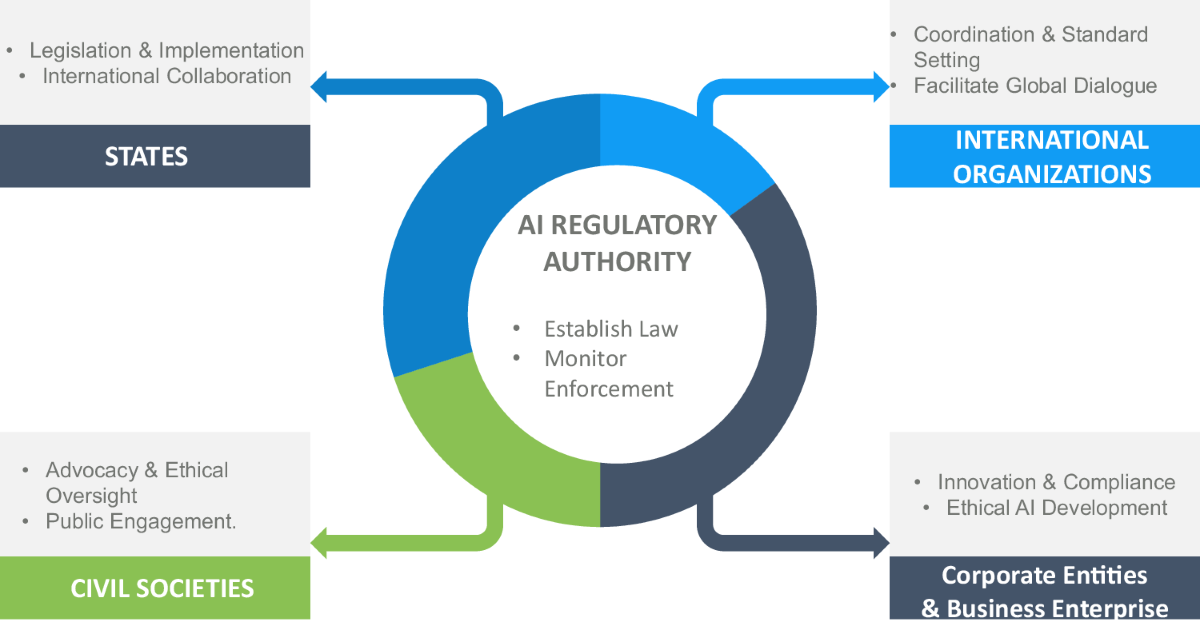
Adaptable governance models incorporate mechanisms for regular review and update, ensuring that they can evolve as technologies, regulations, and stakeholder expectations change. Key elements of adaptable governance models include:
- Modular design: Breaking ethics frameworks into modular components that can be updated individually without disrupting the entire system
- Regular review schedules: Establishing clear timelines for reviewing and updating different aspects of the framework
- Feedback mechanisms: Creating channels for collecting and incorporating feedback from users and stakeholders
- Environmental scanning: Monitoring regulatory, technological, and societal developments that may impact ethical considerations
- Version control: Maintaining clear documentation of framework versions and changes to ensure consistency and continuity
Scenario Planning Visualizations
Scenario planning helps organizations prepare for potential future developments in AI ethics. Visual representations of these scenarios make them more accessible and actionable.
AI Ethics Scenario Planning
mindmap
root((Future AI Ethics Scenarios))
Regulatory Evolution
Comprehensive AI Legislation
Proactive compliance strategy
Documentation automation
Self-Regulation Emphasis
Industry standard participation
Voluntary certification
Regional Fragmentation
Multi-framework implementation
Jurisdictional mapping
Stakeholder Expectations
Demand for Full Transparency
Open algorithm initiatives
Public review processes
Trust through Third-Party Validation
Independent auditing workflows
Certification visualization
User Control Prioritization
Granular preference systems
Impact simulation tools
Technical Evolution
Explainable AI Advancement
Decision path visualization
Confidence metric dashboards
Federated Learning Growth
Distributed governance models
Privacy-preserving analytics
Ethics-by-Design Standards
Embedded ethics checkpoints
Automated ethical testing
Stakeholder Feedback Loops
Effective stakeholder feedback loops ensure that ethics frameworks remain relevant and responsive to changing needs and expectations.
Stakeholder Feedback Impact on Framework Updates
PageOn.ai's agentic capabilities can help keep visual frameworks aligned with evolving best practices. By leveraging these capabilities, organizations can create frameworks that automatically incorporate new ethical considerations and regulatory requirements as they emerge.
Transform Your AI Ethics Strategy with PageOn.ai
Create clear, engaging, and effective visual ethics frameworks that empower your organization to implement AI responsibly and build stakeholder trust.
Start Creating with PageOn.ai TodayMoving Forward with Visual AI Ethics
As AI continues to transform business operations, the need for clear, accessible ethical frameworks will only grow. Visual ethics frameworks offer a powerful approach to addressing this need, making complex ethical principles understandable and actionable across your organization.
By leveraging the strategies and tools outlined in this guide, you can develop visual ethics frameworks that not only ensure compliance with current regulations but also build trust with stakeholders and position your organization as a leader in responsible AI implementation.
Remember that creating an effective visual ethics framework is an ongoing process. By continuously measuring, learning, and adapting, you can ensure that your framework remains relevant and effective as technologies, regulations, and stakeholder expectations evolve.
You Might Also Like
How to Design Science Lesson Plans That Captivate Students
Create science lesson plans that captivate students with hands-on activities, clear objectives, and real-world applications to foster curiosity and critical thinking.
How to Write a Scientific Review Article Step by Step
Learn how to write a review article in science step by step. Define research questions, synthesize findings, and structure your article for clarity and impact.
How to Write a Self-Performance Review with Practical Examples
Learn how to write a self-performance review with examples and tips. Use an employee performance review work self evaluation sample essay to guide your process.
How to Write a Spec Sheet Like a Pro? [+Templates]
Learn how to create a professional spec sheet with key components, step-by-step guidance, and free templates to ensure clarity and accuracy.
